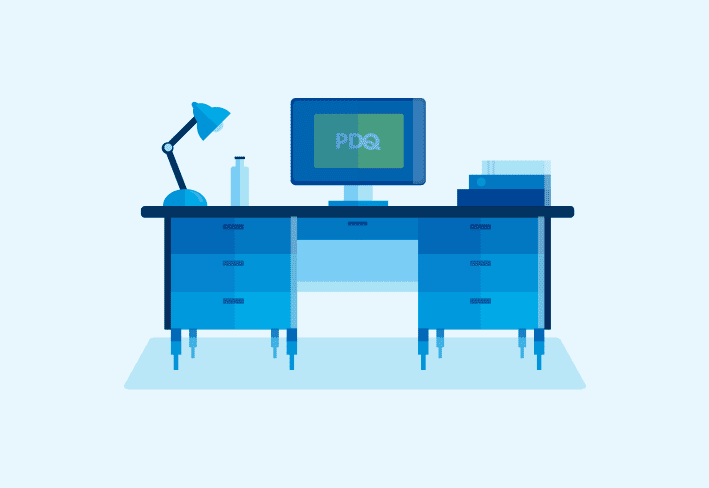Much as its name suggests, application migration is the process of moving applications from one operating environment to another. Because you're an IT wizard, your DevOps team might rely on you to assist with an app migration project. While app migration projects can be time consuming, they can help your business save money, increase application availability, or offset a change in your environment (e.g., upgrading to a newer operating system or replacing a legacy application).
Here’s a little refresher on what application migration is — along with examples, strategies, and best practices.
Application migration examples
So why might your team be planning an application migration? Let’s walk through a few app migration examples.
Moving from on-prem to the cloud
Your DevOps team may decide that it makes sense for some applications to operate from the cloud. For example, if your business hosts applications that experience frequent spikes in on-prem traffic, DevOps may decide it’s more cost efficient to base them in the cloud, as cloud computing offers more elasticity in terms of resource usage.
Hosting applications in the cloud gives you the ability to scale up or down, depending on resource usage. And because you pay only for the resources you use, moving an app to the cloud might be a more cost-effective solution than upgrading your hardware to support spikes in application usage.
Moving from the public cloud to the private cloud
Say your business operates various applications from the public cloud, but as your business grows, you need to ramp up your security measures. In turn, DevOps decides to move them to the private cloud, which gives them more control over the IT infrastructure and security measures.
Application migration strategies
There are a few different strategies for migrating your applications to the cloud, which is one of the most popular app migration use cases. Here are some of the most common strategies.
Rehost
Rehosting is the proverbial copy-and-paste approach to application migration. If you choose to rehost an app, all you need to do is move the application from one environment to another (e.g., from your on-prem environment to the cloud). You won’t make many adjustments to the app itself, which makes rehosting a quick and easy way to move apps from one environment to another. The drawback here is that your apps won’t be optimized for usage in the cloud, so you may be missing out on some of the benefits the cloud can offer your app.
Retire
If you find that your application just isn’t useful anymore, you might consider retiring it. This happens often as businesses grow and processes become more efficient. For example, you might have purchased more comprehensive software along the way that provides the same service your application does. If that’s the case, you can streamline your apps by retiring legacy applications.
Refactor or rearchitect
Refactoring or rearchitecting an application takes rehosting a step further. When you refactor or rearchitect an application, you optimize it for the cloud, ensuring it can take advantage of the capabilities of the cloud environment.
Replatform
If your application needs only minor adjustments to be cloud optimized, consider replatforming it. This approach will require less coding for the application to be ready for use in the cloud.
The application migration process: What to keep in mind
Just like with any IT process, application migration requires careful and early planning. Here are a few things your DevOps team considers when planning a migration.
Choosing the right applications to migrate
Your business may have a strategy that outlines the criteria for keeping an asset on-prem or moving it to the cloud. (And if you don’t, here's your sign to build one!) Some applications may be better left on-prem while others might benefit from a move to the cloud. For example, if one of your applications sees occasional but remarkable spikes in traffic, moving it to the cloud can ensure that the application can handle those spikes — all without having to make costly upgrades to your on-prem hardware.
Knowing how applications interact
The only thing worse than having an on-prem resource that should be cloud based is moving that on-prem resource to the cloud and breaking it. 🙃
While planning an application migration, you need to know which apps have dependencies that need to be taken into consideration before moving them to the cloud. Have a plan to address those dependencies for a seamless migration that won’t disrupt your weekends for the next three months.
Presenting your plan to stakeholders
Because migrating applications will impact end users, having the right buy-in throughout your organization is a must.
And truth be told, this might take some persuading. Application migration might require work from other teams, and applications may become unavailable during the process. This is why app migrations require buy-in across your organization — from your IT team to the CEO. And, of course, the conversations with these folks will be very different. Emphasize the relevant benefits to each person, and you’ll be more likely to get the buy-in you need.
Application migration best practices
Here are some application migration best practices to keep in mind as you support DevOps through the process.
Keep an up-to-date inventory of what you move to the cloud
Moving applications to the cloud is not a set-it-and-forget-it process. If you lose track of everything you move to the cloud (which is surprisingly easy to do), you could end up with a bill from your cloud provider that makes you want to shut down your computer and run away to the Caribbean — even more than you already want to.
Keep a detailed list of everything that’s moved to the cloud, as well as the associated charges. This will save you a lot of headaches and awkward explanations later on.
Adopt a cloud pro
Cutesy jokes aside, the best application migrations happen when you have someone in your corner who knows the ins and outs of the cloud. The cloud is vastly different from on-prem environments, and having an expert to turn to and bounce ideas off is invaluable. They can help you make the right IT decisions based on your environment’s needs. Your cloud pro is your friend who deserves all the donuts in the world.
Keep your stakeholders and end users informed
We’re preaching to the choir, but anything IT related is wildly unpredictable. An hour of anticipated downtime can easily turn into a full day (or longer). IT communication is key here. Make sure your stakeholders know where you are in the application migration process and any changes they can expect to see along the way. This is the key best practice that will shave off a number of those “why doesn’t this work?” Slack messages.
At PDQ, we’re fans of the cloud, too. That’s why we built PDQ Connect to help sysadmins manage devices quickly and easily through our agent. Sign up for a free 14-day trial.




